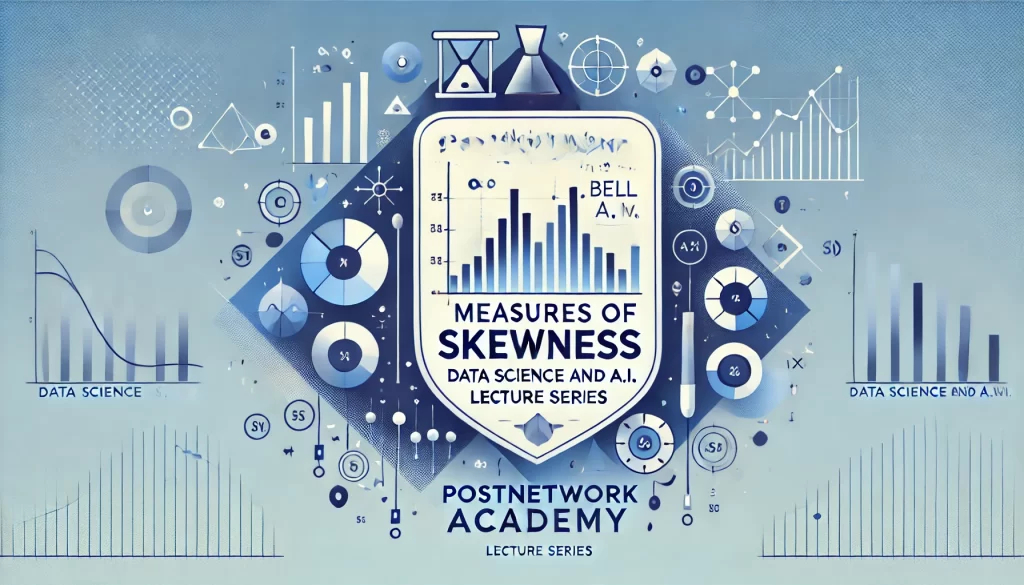Measures of Skewness – Data Science and AI Lecture Series
In this post, Bindeshwar Singh Kushwaha from PostNetwork Academy explains the concept of Measures of Skewness. Skewness refers to the lack of symmetry in a data distribution. Understanding skewness is essential in data science and AI, as it helps to interpret the distribution of data accurately.
What is Skewness?
Skewness measures the asymmetry of the distribution of data. In simple terms, it tells us whether the data is leaning more towards the left or the right of the mean. Skewness can be classified into two types:
1. Absolute Measures of Skewness
2. Relative Measures of Skewness
Absolute Measures of Skewness
These are based on the mean, median, and mode of the dataset.
– Mean – Mode: The difference between the mean and mode indicates the skewness.
– Mean – Median: The difference between the mean and median also reflects the distribution’s skewness.
Another way to measure skewness is using **Quartiles**:
– Q3 + Q1 – 2Q2: The difference between the first quartile, third quartile, and twice the median.
Examples of Absolute Measures
1. Mean – Mode Example
For a dataset with:
– Mean = 50
– Mode = 45
Skewness = 50 – 45 = 5
2. Mean – Median Example
For a dataset with:
– Mean = 70
– Median = 65
Skewness = 70 – 65 = 5
Relative Measures of Skewness
These measures are useful for comparing the skewness of different distributions. Some common relative measures include:
– Karl Pearson’s Coefficient of Skewness
– Bowley’s Coefficient of Skewness
– Kelly’s Coefficient of Skewness
– Coefficients Based on Moments
Formulas for Coefficients of Skewness
1. Pearson’s 1st Coefficient of Skewness
\(\text{Skewness} = \frac{\text{Mean} – \text{Mode}}{\text{S.D.}}\)
2. Pearson’s 2nd Coefficient of Skewness
\(\text{Skewness} = \frac{3(\text{Mean} – \text{Median})}{\text{S.D.}}\)
3. Bowley’s Coefficient of Skewness
\(\text{Skewness} = \frac{Q3 + Q1 – 2Q2}{\text{S.D.}}\)
4. Kelly’s Coefficient of Skewness
\(\text{Skewness} = \frac{P_{90} + P_{10} – 2\text{Median}}{P_{90} – P_{10}}\)
Example of Pearson’s 1st Coefficient of Skewness
For a dataset with:
– Mean = 65
– Mode = 60
– Standard Deviation = 10
Skewness = \(\frac{65 – 60}{10} = 0.5\)
Example of Pearson’s 2nd Coefficient of Skewness
For a dataset with:
– Mean = 60
– Median = 55
– Standard Deviation = 12
Skewness = \(\frac{3(60 – 55)}{12} = 1.25\)
PDF Presentation
mospdfVideo
Conclusion
Understanding skewness is a key aspect of data analysis, as it provides insights into the distribution of data, allowing better decision-making in statistical modeling. Whether using absolute or relative measures, these concepts are crucial for anyone working in data science and AI.
